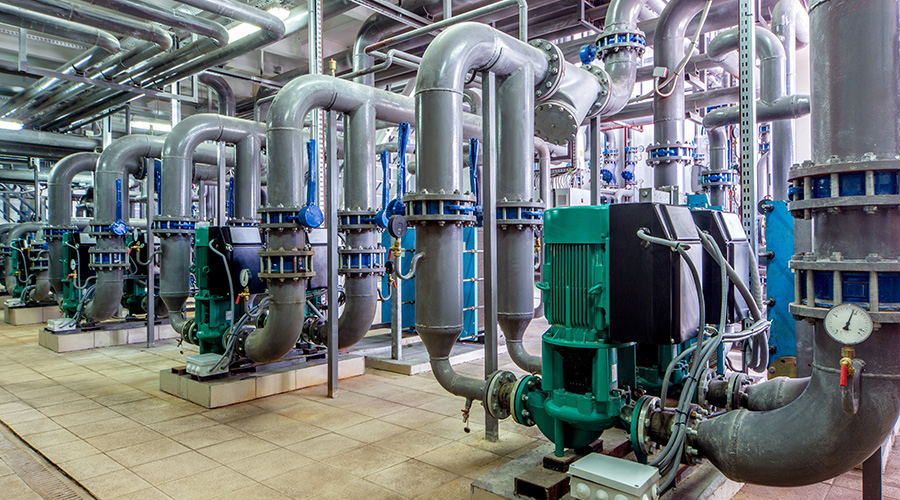Build on the Benefits of Feedback, Collaborative Approach
There are three additional steps that can make it easier to design HVAC systems for maintenance, building on the benefits of getting early feedback from the service provider, fostering a collaborative approach, and skillfully managing the transition from construction to occupancy.
First, it's worthwhile to bring the service provider that will be maintaining the building into the project team as early as possible. That firm can provide feedback on HVAC system designs to help the team consider exactly what changes ought to be made. For example, in a recent project, the owner brought the service team into the project several months before it normally would have, and in turn the service group provided specific feedback on the design of the water treatment system for a cooling tower. The feedback included relocating the tower's blow-down drain from the roof to a drain receptor inside the building, which helped make a safer work environment, since freezing water on the roof could have created a safety hazard. Another suggestion was to add valves and future piping connections so the system could be easily isolated when the owner expanded operations in the future. This kind of input has to come from the experts.
Second, get the whole project team to buy in. Approaches that foster collaboration, like design-build or integrated project delivery, can help project teams better account for the owner's broader set of values. Regardless of the project approach, the entire project team has to be ready to make changes in order to design for maintenance. The architect may need to expand the space for the mechanical room or widen a duct to accommodate an additional entry point. The design team also needs to understand the long-term financial implications of their design decisions — although it may make their design slightly more expensive, it will be the right decision for the owner. In the end, better collaboration helps avoid expensive and unnecessary design rework throughout the project.
Finally, improve the handoff to occupancy. The transition from construction to occupancy is the best opportunity to bridge the gap between design and operations. Unfortunately, it's the place where the disjointed construction industry most frequently falls short.
Building operators are often handed a building after construction with just a few hours of building operations training by the construction team. If the building engineers are instead brought on as part of a peer review or are involved with the design process, they will be able to understand the philosophy of why and how the building will be operated and maintained. This in turn gives them the knowledge and the ability to better troubleshoot as issues arise, which is particularly important considering that budget constraints or a lack of engineering insight often cause building engineering teams to struggle to resolve the root cause of HVAC system issues. Involving the building engineers during the HVAC design process also gives them the opportunity to have a sense of ownership when the building is turned over.
Long-Term Benefits
The entire project team has a responsibility to improve the handoff from design and construction to actual operations. Simply put, the time and effort spent during this transition help protect the significant upfront investment put into high-performance buildings. It creates predictable outcomes with the expected maintenance costs and how the building is actually operated.
Today, many buildings are likely draining money thanks to decisions made years ago. If the building's design inadvertently inhibits proper maintenance, systems that once delivered stellar energy performance may no longer be able to do so. Tenant complaints may mount as maintenance on systems becomes more complex. Simply put, if the design team had better considered the maintenance needs, those buildings would be saving money.
Budget dollars invested in smart HVAC design have a long-term payoff. Even if some decisions may seem to be inconsequential or fiscally irresponsible because the benefits are difficult to quantify, remember that maintenance and operational costs always make up a significant percentage of the total cost of ownership. Planning for maintenance during design may not be an easy process, but it's worth it. Thinking through HVAC maintenance needs will save money, extend the life of the building, and reduce risk.
Aaron Wozniak, P.E., is the engineering manager for mechanical design in McKinstry's Portland, Ore., office.
Erik Teyema, P.E., LEED AP, is the business manager for McKinstry's major mechanical construction in Portland.
Related Topics:













